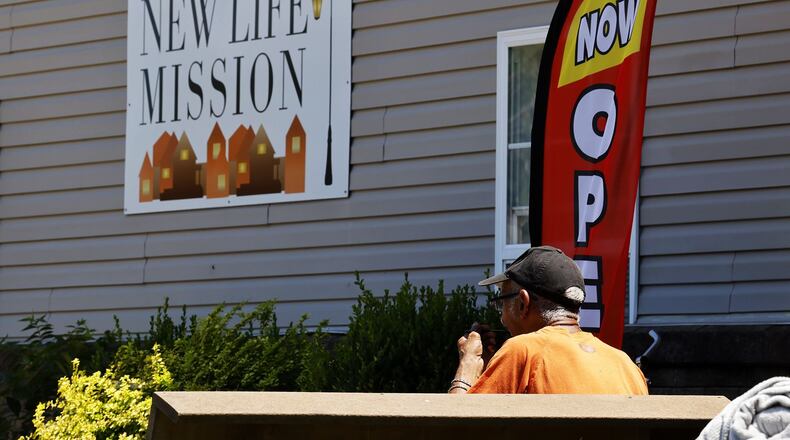This is part of more than $1 billion in total USDA funding cuts and pauses by the Trump administration, according to Reuters, which also includes $660 million for the Local Food for Schools program in 2025.
Feeding America, a national organization that is the parent of Shared Harvest Foodbank in Fairfield, receives more than 20% of the USDA food distribution.
These federal budget cuts have trickled down to food pantries where there are fewer free and discounted food allocations, said New Life Mission Director and Pastor Felix Russo. New Life Mission receives food from Shared Harvest, along with other sources.
“As some of the lower, no-cost foods are not as available, that means we have to pay more for food,” he said. ”
New Life Mission is in Hamilton’s Riverview Neighborhood, also known as the city’s 2nd Ward. It serves clients hot lunches and provides on-site resources, such as with Job and Family Services, and access to mental health counseling and addiction recovery assistance, engaging almost 200 people a day.
Credit: Nick Graham
Credit: Nick Graham
The Mission’s shelves aren’t bare, but they distribute food to between 40 and 70 families every day four days a week, so in the coming weeks and months, their purse strings will be pulled a lot tighter.
“Yes, we have food, our shelves are full, but it comes at a cost,” said Russo, who’s entering his ninth year at New Life Mission on Henry Street. “It costs us more right now. We just run off private donations, churches. We run pretty lean.”
More than 47 million people lived in food-insecure households in 2023, according to the USDA, which included 7.2 million children in those homes.
Shared Harvest Foodbank Executive Director Terry Perdue said the federal effort to balance the budget is “at the expense of some of the most vulnerable people among us.“ The cuts to federal Supplemental Nutrition Assistance Program (SNAP) will lead to more people seeking food pantries and food banks for support.
“With the cost of food being so unpredictable, and looming fears of tariff-imposed cost increases, the proposed harmful changes to SNAP could not have come at a worse time,” Perdue said.
SNAP is the federal food program providing a lifeline to millions of low-income families in order to supplement grocery bills. The average daily SNAP benefit is $5.45 per person, which does not keep pace with current food prices, according to Feeding America, the country’s largest food bank. More than half of the recipients use monthly benefits in just two weeks.
“Food banks and the food pantries we support will be expected to mitigate the consequences of people not having food due to the reduction or loss of access to food through SNAP and potentially other resources,“ Perdue said. ”We need our legislators to understand that the people who rely on these benefits are not our enemies, many of whom are seniors on fixed incomes, and families with children who are overwhelmed with the cost of living.”
Russo said they’ve seen lean times before, including just a couple of “sketchy” years during the COVID-19 pandemic. Though this will be “just another one of those periods,” he admitted it will be one of the leanest times they’ve experienced, meaning they’ll have to seek more donations, more food drives, and issue more requests for help.
“I’ll just trust God through this period,” Russo said. “Again.”
About the Author

